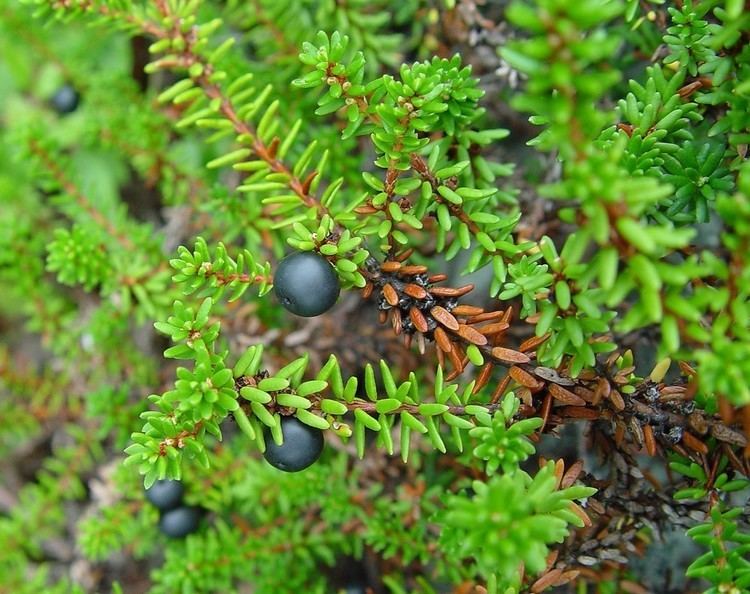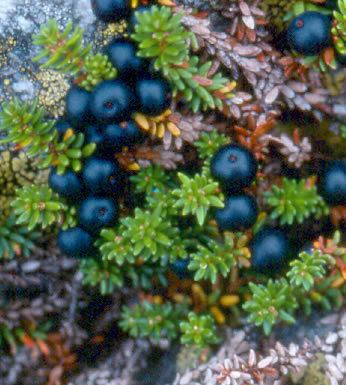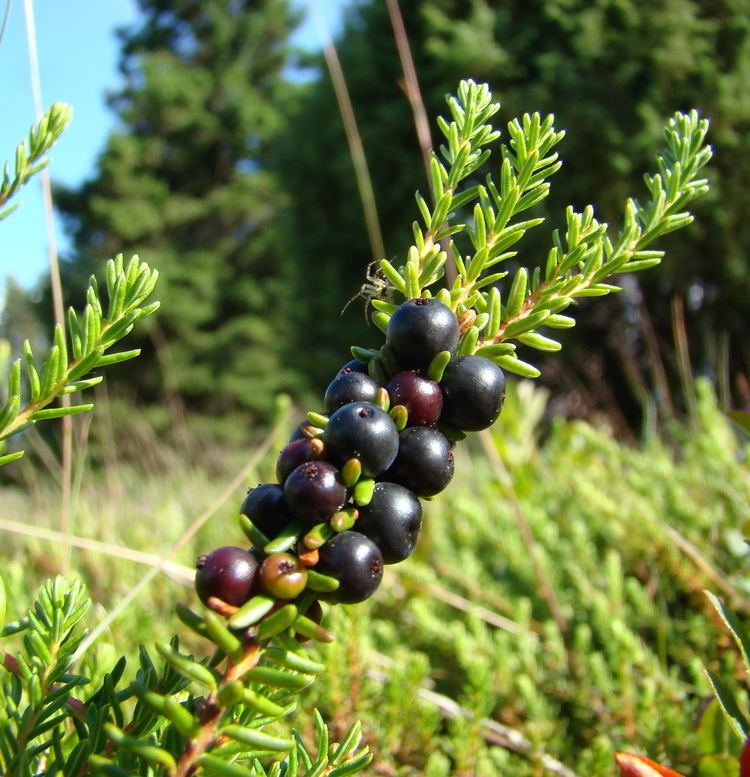Scientific name Empetrum Rank Genus | ||
 | ||
Lower classifications Empetrum nigrum, Empetrum rubrum Similar Arctostaphylos, Cloudberry, Water, Lingonberry, Marsh Marigold | ||
Empetrum, the crowberry, is a small genus of dwarf evergreen shrubs that bear edible fruit. They are commonly found in the northern hemisphere, from temperate to subarctic climates, and also in the Southern Andes of South America and on the South Atlantic islands of South Georgia, the Falklands and Tristan da Cunha. The typical habitat is on moorlands, tundra and muskeg, but also in spruce forests. They are also found abundantly on the dune slacks and sand dunes of the Danish Island of Fanø as well as all over Iceland.

Species of Empetrum include: E. nigrum (crowberry or black crowberry) and its tetraploid subspecies E. nigrum ssp. hermaphroditum, E. eamesii (rockberry or purple crowberry), E. rubrum (red crowberry). All are evergreen mat forming shrubs, with small, light green needle-like leaves 3–10 mm long. The flowers are small and either bisexual or dioecious. The fruit is a fairly dry berry.

The genus and related ones such as Ceratiola and Corema were for most of the 20th century classified in their own family Empetraceae, but molecular data, leaf morphology, and other considerations point to their inclusion in the Ericaceae (specifically, as a tribe within the subfamily Ericoideae). This tribe does share a number of distinctive morphological features, which seem to be associated with wind pollination.

Uses

In subarctic areas, Empetrum has been a vital addition to the diet of the Inuit and the Sami. After waning popularity, the crowberry is regaining its reputation as an edible berry. It provides a steady crop and the gathering is relatively easy. The high concentration of anthocyanin pigment can be used as a natural food dye. The Dena'ina (Tanaina) harvest it for food, sometimes storing in quantity for winter, and like it mixed with lard or oil. They keep well in a cool place without any special preparation.

The berries are usually collected in the fall of the year but if not picked they may persist on the plant and can be picked in the spring. The Inuit and Native Americans mix them with other berries, especially the blueberry. Cooking enhances the flavor. They make good pie and jelly.
The leaves and stems are used in Dena'ina medicine for diarrhea and stomach problems; they are boiled or soaked in hot water, and the strained liquid drunk. Some claim the berry juice is good for kidney trouble.
In Dena'ina plantlore in the Outer and Upper Inlet area of Lake Clark, the root is also used as a medicine, being used to remove a growth on an eye and to heal sore eyes. The roots are boiled and the eyes are washed with the strained, cooled tea, to which a little sugar may be added. Some people say blackberry stems can be used in the same way for these ailments.
Crowberries contain mostly water. Their vitamin content is low, as is also the concentration of volatile liquids, the lack of which makes them almost odorless. The acidity is lower than is typically encountered in forest berries.
Crowberries are also occasionally grown as ornamental plants in rockeries, notably the yellow-foliage cultivar Empetrum nigrum 'Lucia' (photo, left).
